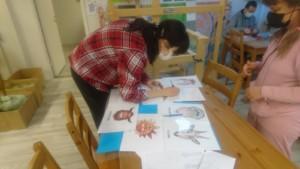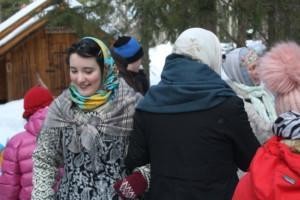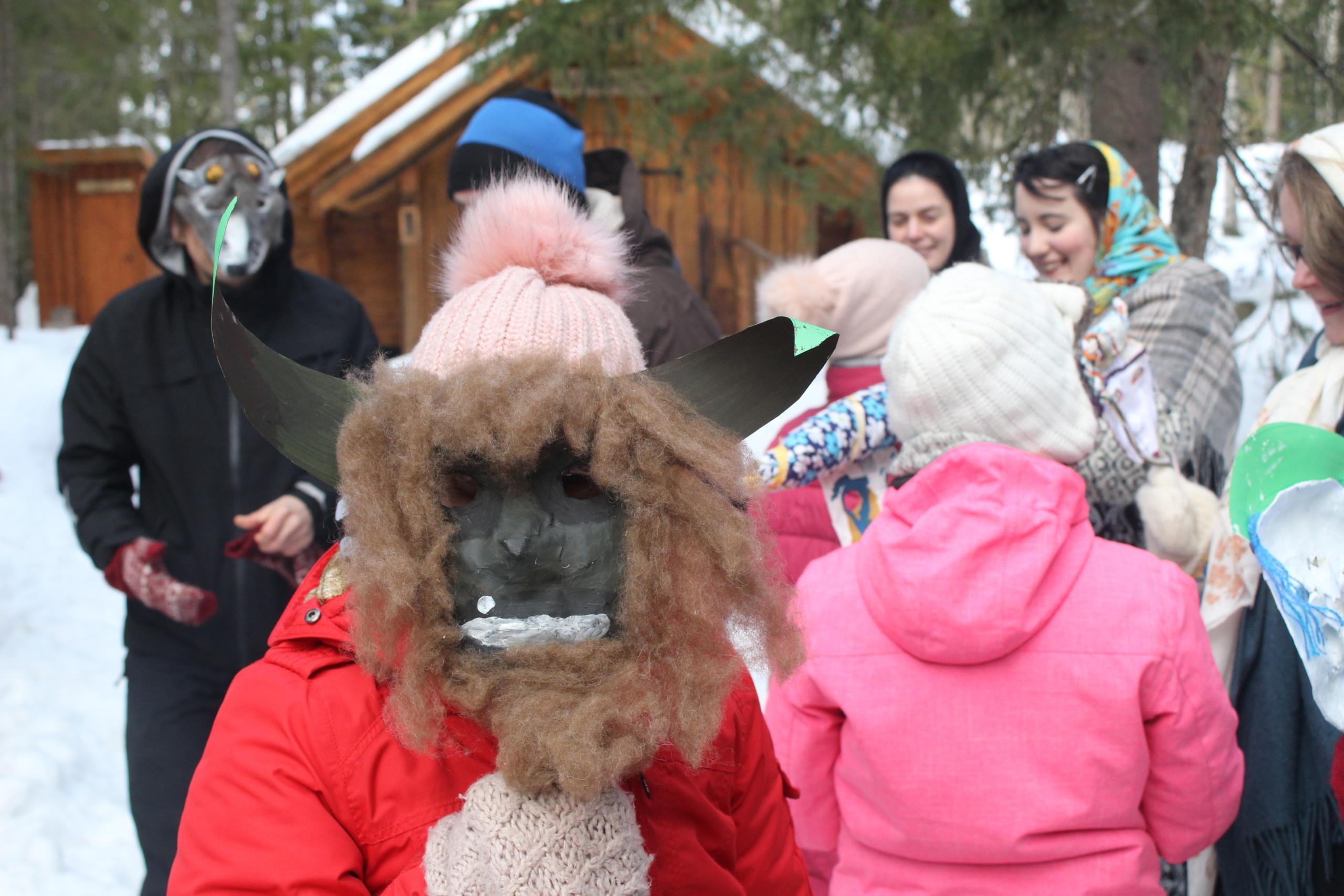Dasha, a European Solidarity Corps volunteer from Russia, shares what it’s like to build connections with people when there’s a language barrier present.
Text: Daria Aleksandrovna Panarina
Photo: Kisälli-Harjulanmäki

Volunteer Dasha Panarina (left) is preparing a board with Maslenitsa characters for the masks at Kisälli. In the photo, Daria is working together with Heidi Lohtander, and Aleksander Kämärä is working in the background.
Hi! My name is Dasha Panarina. I’m 22 years old and come from the region of Tatarstan, Russia. I have been volunteering in Finland for five months now. I am working in an arts and crafts workshop at Kisälli-Harjulanmäki in Vihti where I assist people with mental disabilities with different handicrafts, for example, weaving carpets and making bags, and in their daily activities.
Learning to communicate through gestures and sounds
My mother tongues are Russian and Tatar but in the volunteering project, in order to communicate with my colleagues, I use English. The students at Kisälli speak Finnish, but they also know a few phrases in Swedish, Russian, Spanish and other languages. Since I know only a little bit of Finnish and the students — just very few phrases in Russian, I feel like I am communicating as if I was a child again, trying to express everything with gestures and sounds. This is the well-forgotten way to communicate. In the beginning, it was difficult to explain to the students that I didn’t understand them. Later on, I learned the Finnish phrase ‘Minä en ymmärrä’ (‘I don’t understand’) and picked up some other frequently used phrases in Finnish, which made it easier to communicate.
The arts and crafts that we do with the students take time. During this process, there is constant communication, because I need to monitor the process. In one way or another, we need to communicate. While doing their work, some students like to share something from their lives, for example, about their dogs and nephews. That way, a dialogue is started. Art is also a very associative thing. To explain something, students need to use familiar concepts. For example, in order to make a circle on a sheet, some students may refer to a ball to explain what they want to do.
“While doing their work, some students like to share something from their lives, for example, about their dogs and nephews. That way, a dialogue is started.”
Finding new ways of self expression
Right now, I have started creating my own personal project. My project is based on the celebration of Maslenitsa, a Slavic festival dedicated to the farewell of winter and the welcoming of spring. In Finland, winters are as long as in Russia, and I thought that it would be nice to share this cultural tradition of my country. The idea is to make papier-mache masks of Maslenitsa characters together with the students and celebrate this holiday with them. I hope that the time spent together preparing for this celebration will allow me to build closer connections with the students.

Creating my personal project was also a new way to express myself and participate at work. Before arriving in Finland, I was an environmental student. That was not related to creativity at all. I can probably say that the whole expression of myself was constrained to writing reports and reading academic literature. This personal project at Kisälli provided me an opportunity to express myself creatively.
“Now I have found ways to communicate with the students, know some Finnish and I can roughly understand what they are talking about.”
Connecting through sharing
For me, in general, it is difficult to establish deep connections as I am an introvert. But with the students we connect by laughing together at jokes, sharing the same songs or something else we’re both familiar with. Recently, we talked about a disco sauna on wheels from Kirovsk, Russia. Sometimes, someone sings Russian songs like Pugacheva’s ‘Millions of scarlet roses’ and so on. I can’t say that we share the same things all the time but finding these few things we both have in common has allowed us to connect.
At the beginning of the project, I didn’t know Finnish at all and although I had an idea about people with mental disabilities, I didn’t know exactly what to expect from them. I can say that everything turned out better than I thought. Now I have found ways to communicate with the students, know some Finnish and I can roughly understand what they are talking about. Working with people with mental disabilities has definitely taught me to be more patient.
This article has been extracted from Maailmanvaihto’s magazine Volunteers’ Voices 1/2022 edition with the theme of connections via international volunteering. You can find the full magazine and previous releases here.

